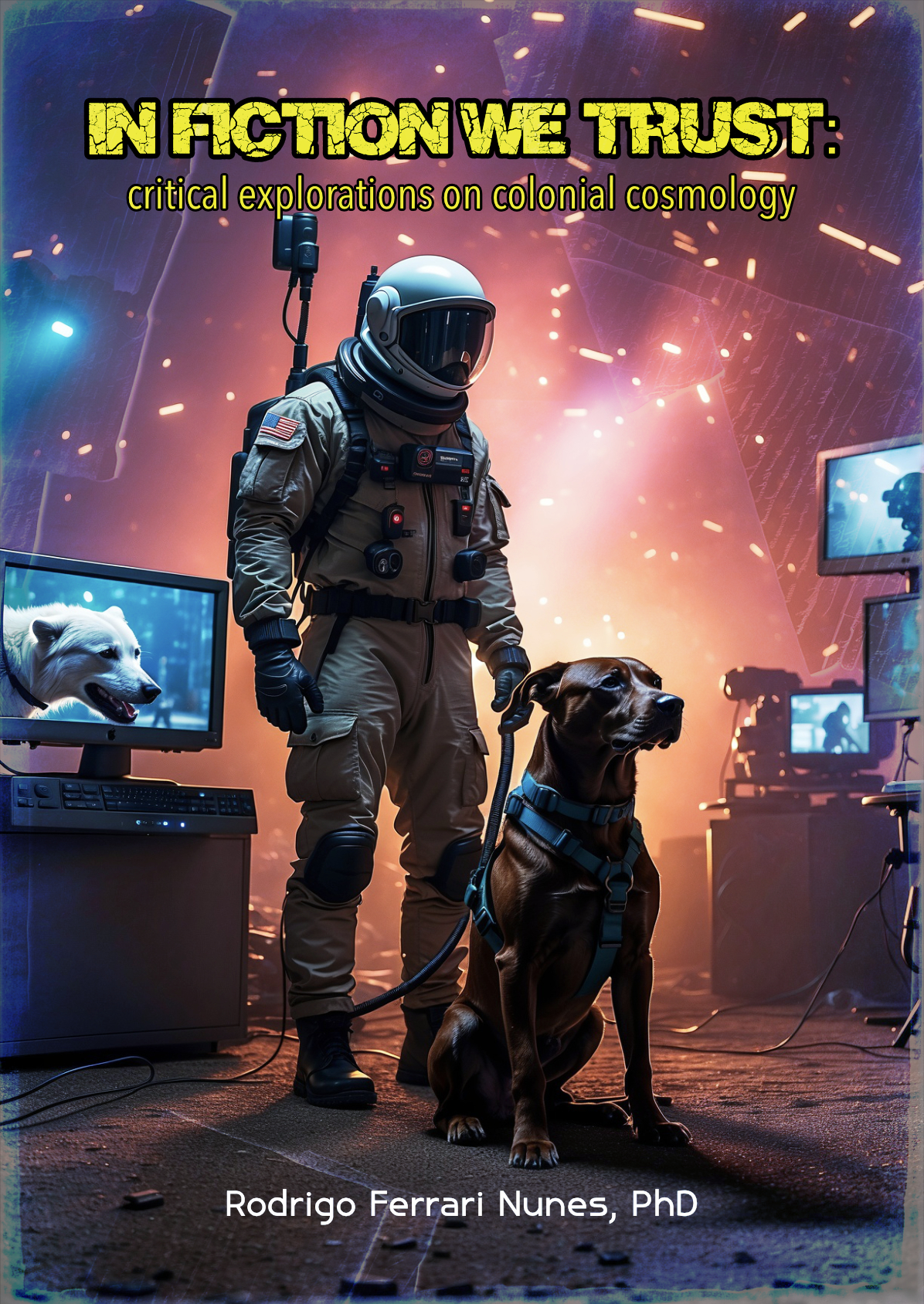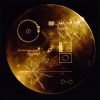SECRET SYMBOLS AND ARCHETYPES
In this analysis, I draw on my direct experiences with the contemporary Internet social phenomenon known as Truth movement and touch upon themes that circulated under its umbrella.1 I argue that symbols from antiquity have been transformed and misused as mind control propaganda in cults and exploration programs. In addition, I argue that there are no secret symbols or archetypes that exist in some hive mind or collective unconscious, either as Carl Jung himself described it, or as present-day truthers have reimagined the concept. Instead, symbols are gathered from ancient sources, modified, and unleashed in modern contexts in ways that seem to conform to Carl Jung’s theory of primitive archetypes and the universal primitive mind. That is, the agencies that select ancient symbols and employ them in cosmological stories designed for the masses seem to draw upon Jung’s theory.
My argument raises a key question — if Jung’s theory is not sound, how does it work so well for controlling how populations think and defining what kinds of futures they should desire, and to play them like puppets? There are many ways of explaining this phenomenon that do not rely on a universal collective unconscious. There are literally dozens of models and theories that have arisen just from the history of anthropology alone that would provide sounder explanations of social phenomena. For instance, I am clearly indebted to Pierre Bourdieu’s extensive work and how he developed concepts like habitus, hexis, and praxis. Yet, I have moved beyond this model in my 2015 PhD dissertation, developing a theory of epistemological resonance. In this piece, however, I am writing in plain terms and staying away from straight up social theory unless necessary.
Although Jung’s theory is demonstrably poorly researched, outdated, ethnocentric and universalist, as I show here, we can still find some validity in it, but it has nothing to do with the terms of his theory. That is, reading between the lines, it is clear that Jung makes a valid point about the power of stories to direct the imagination. Jung tries to deal with what I call the power of authoritative stories to convince and enchant, and people’s tendency to rest their critical minds on fictions about reality and on fantastic future scenarios.
First, we will look into how Jung’s theory is neither sound nor realistic, and then move into how people incorporate and assent to stories that they should actually be critical of. Labels like scientist, science, scientific, truther, truth and other variations provide the same deception — an impression of superiority, infallibility and authority whereas, as I argue, these are simply people telling stories. We will also consider modern examples of unsound scientific and truther lore as we move towards a more extensive critique of the colonial cosmology.
JUNG’S UNIVERSALISM
In the work Archetypes of the Collective Unconscious (1954), Carl Jung tells us that he chose the term collective unconscious “because this part of the unconscious is not individual but universal.”2 For him, this means that the collective unconscious is made up of “contents and modes of behaviours that are more or less the same everywhere and in all individuals” and also “identical in all men,” constituting “a common psychic substrate of suprapersonal nature.”3 First, we should believe that Jung has an extensive grasp of how people from the most disparate societies think and behave, which is far from the case. We should then believe that Jung and his readers could see which behaviors are identical in all men. Jung’s only ethnographic source is Levy-Bruhl, from whom Jung adopted the ethnocentric concept of the “primitive view of the world.”4 “Primitive tribal lore,” for Jung, modifies archetypes by changing them into the “conscious formulae” found in esoteric traditions.5
Jung plays with the concept of “primitive man” as if it were an established given and not simply ethnocentric prejudice and ignorance.6 He provides no critical nuance on this point. He speculates about this homogenous fictional primitive man to build a universalist theory palatable to others in his intellectual tradition. In fact, it would be more fitting to call it a reality-fiction tradition that focuses on making up stories about universal processes of the mind and the soul.
It is remarkable how expressions from alleged primitive languages and logics are absent in the whole work, and yet, Jung writes about a universal primitive that others should believe to be based on sound information. That is, if you take Jung seriously enough not to realize how his argument is based on the exercise of a creative imagination bound to a particular storytelling tradition. Obviously, unless one can grasp at once all indigenous languages and expressions, modes of thought and behaviors, such claims are not possible. The fact that Jung’s theory pigeonholes other cultures as primitive, that is, insinuating a colonial and ethnocentric script, makes it attractive and valuable as a tool for cosmological imperialism. These stories just happen to be taken more seriously by people who consider themselves psychologists because Jung is a traditional authority in that discipline.
For over a hundred years we have known that the idea of a primitive man is, at best, a naïve misunderstanding from people who have not studied the questions involved, and at worse an eugenicist and racist notion based on ethnocentric assumptions. Jung’s work would have benefited if he knew about Kandiaronk’s eighteenth century “indigenous critique.”7 Jung does not refrain from pursuing the fiction of the primitive instead of focusing on empirical phenomena, observations, and interviews. He writes:
“Primitive man is not much interested in objective explanations of the obvious, but has an imperative need, or rather, his unconscious psyche has an irresistible urge to assimilate all outer sense experiences to inner, psychic events. It is not enough for the primitive to see the sun rise and set; this external observation must at the same time be a psychic happening: the sun in its course must represent the fate of a god or hero who, in the last analysis, dwells nowhere except in the soul of man.8″
Jung’s theory about the universal primitive man does not even rely on living among alleged primitives or considering ethnographic works at all. Those who traditionally assume that the idea of primitive man has any validity whatsoever, and they still exist, usually attempt to find that primitiveness in modern indigenous peoples they consider to be in a lower scale of human evolution. Jung just creates his own stereotype so that his primitive man is an archetype of his own creation.
1 I should also warn the reader that the present work is somewhat experimental. I am writing specifically to people who have supported my online work and are familiar with its intricacies. I have given hundreds of live presentations in the last 3 years.
2 Jung, 1954, p. 3.
3 Jung, 1954, p. 4.
4 Jung, 1954, p. 4.
5 Jung, 1954, p. 5.
6 Jung, 1954, p. 6.
7 For a recent discussion of the implications of this indigenous critique, see Graeber and Wengrow (2021).
8 Jung, 1954, p. 6.
PRIMITIVE MAN
Jung’s ideas about a fictional primitive man can also be applied to allegedly modern or civilized people. For instance, believers in space agency tales must piously believe there is a probe called Parker, which has approached the Sun and sampled its atmosphere. The evidence is a computer animation production presented as reality alongside an unverifiable story. Moreover, the low quality of the animation is appalling and clearly so unnatural that believing it to be part of cosmic reality requires absolute ignorance regarding computer animation techniques and an imaginary subservience to authority. The believer, however, thinks that the space probe is entering the Sun.
Without necessarily consciously assenting to the underlying cosmological narrative, the audience is lost in the details. They are unable to realize that they have been systematically prevented from the ability to scrutinize this story, which requires an understanding of the history of computer generated production techniques. Kept in the dark, this naïve audience does not suspect that the alleged evidence is both unverifiable and falsifiable. Thus, just as Jung’s primitive man, space exploration believers are “not much interested in objective explanations of the obvious” but have an “urge to assimilate all outer sense experiences to inner, psychic events.”9 That is, they act like transformers, making phony animations become unquestionable representations of nature through the rigorous lens of science. Believers are unable to realize they are openly being deceived. For them, simplistic diagrams, cartoons, simulations and animations represent an absolute and unequivocal, undeniable reality. Groomed from an early age, they believe that cartoons and graphs always represent science.
The wholesale acceptance of the state’s cosmological storylines comes at a lasting emotional cost. Through a longterm exposure to a barrage of similar stories, believers become emotionally attached to the underlying cosmological narrative and invested in its imaginary futuristic promises. These stories make up what Goffman called an impression of reality in the dramaturgy of daily life.10 In other words, the combined power of “the fostered impression” and “the one the performer attempts to prevent the audience from receiving,” that is, reality.11 Drawing on this insight, I analyze how state actors who represent cosmological authority for the public perform impressions of reality. My analysis, in Goffman’s terms, represents a “disruption” of the “impressions fostered in everyday performances.”12 I seek to answer in which ways a given cosmological “impression can be discredited.”13 My objective is to explain what has been established beyond a shadow of a doubt to people who have not yet noticed it, namely that cosmological tales promoted by state agencies are performances “offered by impostors and liars” that are “quite flagrantly false” different from the “ordinary performances”14 of honest people who seek to understand the world around them. However, there’s an important caveat I noticed in my observations and analyses of the stories people settle for and defend. Even some of the most critical people I know of have often settled for fiction, especially the state’s cosmological fictions which I focus on here. Ultimately, people are generally easy prey for fictions that they cannot verify.
9 Jung, 1954, p. 6.
10 Goffman, 1956, p. 44.
11 Goffman, 1956, p. 44.
12 Goffman, 1956, p. 44.
13 Goffman, 1956, p. 43-44.
14 Goffman, 1956, p. 43-44.
MYSTIFICATION
Being so invested in stories that reinforce an impression of reality that they cherish without question, space believers are unwittingly programmed to react against anyone who dares to expose the logical fallacies and contradictions inherent in those stories.15 For instance, space believers, thinking that sound and verifiable science is on their side, openly act like fanatical orthodox bigots without fearing any negative social and economic consequences. In fact, they have been greatly rewarded for hateful, extremely prejudiced behavior.16 They have the support of a larger culture built upon the wholesale acceptance of and assent to the state’s colonial space exploration storylines. Here, Goffman’s thoughts on mystification come to mind. For him, an individual’s performance “accentuates certain matters and conceals others.”17 If perception, he reasons, arises from social “contact and communion” then it is important to exert control “over what is perceived” by limiting and regulating contact while paying attention to the relation between informational and ritual terms.18
“Failure to regulate the information acquired by the audience involves possible disruption of the projected definition of the situation; failure to regulate contact involves possible ritual contamination of the performer.” 19
Suspending the audience in awe is a key feature of mystification or fantastic and deceptive storytelling. Of course, as soon as these stories are understood for what they are, fiction, they lose their deceptive power. This is why the stories space believers accept are analogous to the tale of Santa Claus and his magical flying reindeer that rewards children who behave, that is, do what their parents tell them without question. The state’s space tales are very similar, but people remain under their spell for their whole lives and only rarely break free from them.
Goffman notes that “restrictions placed upon contact, the maintenance of social distance, provide a way in which awe can be generated and sustained in the audience” so that it is “held in a state of mystification in regard to the performer.”20 This is why, to this day, despite the fact that NASA projects are funded with taxpayer money, press conferences do not allow members of the general public to ask questions. Only reporters that work for mainstream news outlets are allowed to ask questions. Most of them are screened beforehand. If they allowed the public to ask their own questions, NASA runs a high risk of losing face, which has happened only occasionally. Moreover, the public tends to forget and often does not perceive what are obvious gaffes. For instance, during the Apollo 11 press conference, astronauts could not recall having seen any stars on their way to the Moon and back. This is because, as no stars are shown in the Moon landing productions, they were forced to deny that stars could be seen. Later, to embellish their stories, different astronauts have claimed both that they could not see any stars and that they saw every imaginable star.
15 I refer to space believers as people who accept without question the tales that various international space agencies, governments, politicians, intelligence agency assets in the entertainment industry, and other believers promote. They also tend to be completely ignorant regarding the history of space agencies and the techniques used to fake so-called space exploration.
16 One example is the YouTube channel Professor Dave Explains. It features an actor who is not a professor at all, and his most popular videos target cosmological critics that identify as Flat Earthers, a category that I critically deconstruct in this book. Regardless, Dave’s overtly aggressive attitude and discourse should be considered hate speech if he directed it to any ethnic group or gender orientation. Yet, since he targets Flat Earthers, considered fair game for bigot prejudice, Dave has been rewarded with over 2 million subscribers.
17 Goffman, 1956, p. 44.
18 Goffman, 1956, p. 44.
19 Goffman, 1956, p. 44-45.
20 Goffman, 1956, p. 45.
SPACE HERO MYTHOLOGY
From the standpoint of the state,21 space exploration stories should keep audiences suspended in this awe indefinitely. As it shall become clear for the reader, tales of space exploration are colonial myths that portray the state and its agents as heroes and pioneers on an endless mission. Such myths purport to represent the whole of humanity and pushing through cosmic frontiers and beyond. The sustained popularity of science fiction supports the propagation and acceptance of these myths among the unsuspecting public. There are various spells or word tricks that space believers cannot resist, such as the notion that science fiction inevitably becomes reality or that the impossible is possible. In reality, such spells are essential to the working of absolute state control as depicted in George Orwell’s classic novel, Nineteen Eighty Four (2000[1949]), that we examine in more detail later.
Although Western mystics in the nineteenth century pioneered the portrayal of fiction as unquestionable reality to their so-called initiates, the United States and the Soviet Union pioneered the successful employment of state exploration tales as propaganda that the masses take for undeniable reality. Thus, to achieve the eternal suspension of the unsuspecting population in awe, managing social distance between the state’s heroic characters and the general public is imperative. The state continuously regulates this relationship. This is true of every single so-called space agency, regardless of the country it promotes or the front of independence they might project. One strategy is to add more characters and details to prop up the state’s projection of reality with the semblance of diversity one may expect from reality. Another is to eradicate the possibility of critical points of view by only allowing astronauts and officials to answer scripted questions in public ceremonies.
Yet, there is always an impasse — while space believers are convinced an outright fabrication must be the truth, skeptics deconstruct the production techniques used and demonstrate that illusions based on fictions are being presented as reality. Since such illusions are culturally tagged with the authority of an unquestionable one-fits-all idea of science, believers are unable to break free from their bonds on their own. The lack of resistance is practical because it provides socioeconomic opportunities for believers, which are far more numerous than skeptics. The public expression of even slight skepticism regarding the fictions of space exploration comes at high social and economic risks and costs.
As Michel Foucault noted, it is important to consider “who is able to tell the truth, about what, with what consequences, and with what relations of power.”22 In fact, state propaganda regarding space exploration has been set up in such a way that it leaves no room for cosmological alternatives, diversity and critique. The state’s intention is to colonize completely all cosmological alternatives, no matter how ancient or modern they turn out to be. The problem is that it does not take much to demonstrate the state’s tales as incongruent, repetitive, and lacking verifiable evidence.
The state’s cosmological fictions are so glaring, full of logical holes and evidential blunders that the slightest critique could bring it down. Hence the extreme fear that propagandists have of critics. Due to the regulating peer-pressure automatically provided by space believers, the cosmological critic “risks his privilege to speak freely when he discloses a truth which threatens the majority.”23 Skeptics are constantly discouraged with sanctions such as outright censorship and aggressive ridicule. Such strategies are necessary because of the ease with which present day technologies can demonstrate the fallacies of the state’s cosmological tales. Literally anyone can do it anywhere on the Earth. What is much rarer and more difficult is to find people who cultivate the confidence to question the authority of state actors and have the revolutionary courage to face the surrounding peer-pressure and conformity.
21 Throughout this work, when I mention the state, I am using a shortcut to refer to the many actors and agencies that have been set up to control the populations’ cosmological impression of reality.
22 Foucault, 2001, p.5.
23 Foucault, 2001, p.18.
CARTOONISH ANIMATIONS
Upon close examination, all space exploration stories are unverifiable and should be classed as fiction and state propaganda. In most cases, they are very flimsy and poorly crafted fictions. Yet, as they are presented as reality and take money from people who need it, they should also be seen as frauds. As incredibly overpriced endeavors, they syphon trillions of dollars while people are forced into debt and poverty. The widespread cultural belief in space stories allows this to happen. As such, it plays an important role in the marginalization of the poorest. Regardless of how clueless and gullible, space believers are also responsible for this. Space exploration tales and overpriced projects only benefit the parasitical corporations that control the state and promote themselves under the rubric of STEM, science, technology, engineering and mathematics.
More recently, space agencies and associated private enterprises have been transitioning into computer animated productions. They conform to the production trends and techniques that Hollywood has been developing for decades.24 In the past, scale models, ballistic missiles and rocket assisted balloons were more popular in the production of space tales. In the history of space exploration lore, many techniques for producing images have been used, always in parallel with the development film industry production techniques. We are now two decades into the era of augmented reality. This started roughly with the launch of the International Space Station propaganda, in 1998. This makes the detection of evidence for deception easier. This is because the stark and obvious contrast between the techniques used in the 1960s to produce space mission images, with glowing projection balls and scale models, and present day computer animation techniques.
The believer thinks that mere technological differences from older and current cameras should account for most discrepancies, whereas close examination shows the opposite is true. Not only things look different, but present cameras and compositing techniques actually obfuscate more than they reveal. One of the most fantastic cases is how Jupiter appears in the alleged images taken by the two Voyager probes.25 These videos depict Jupiter in contradictory ways that prove they are simply studio productions. One video depicts Jupiter spinning and flickering like a projection globe as its inner bands remain static and its moons literally hop around; another shows a Jupiter that does not spin while its inner bands flow in different directions at the same time.
The only actual evidence that the Voyager images provide is for different composite and animation techniques that use different objects. The believer, however, sees a remote controlled space probe sending images from Jupiter and beyond. They must also believe NASA can receive signals from a transmitter that has 18 Watts of power from over 14 billions miles away. A transmitter with 18 Watts would not reach more than 25 kilometers on the Earth until its signal becomes undetectable. NASA claim they have special antennas that have been able to track these signals for over 40 years. It is quite amazing how long these technologies can last in the vacuum of space. In fact they will last for as long as the stories last in the minds of believers. The Voyager story is an example of an intergenerational fiction that has not faded. It keeps believers in awe, waiting for savior aliens to find the probes someday. Yet, this idea is just nonsense, even for space faring alien believers, since the Earth would be much easier to find than any tiny probe lost in the vacuum. In fact, space stories live in the imaginations of believers, who provide their own endless stream of interrelated details, crystallizing their cosmological fantasies. As with works of fiction, believers find the state’s space cosmological narratives more believable and realistic, complex and enthralling as new characters, adventures, and storylines are added.
Over the years, some of the most enduring storylines are associated with the late Carl Sagan, including the Voyager deception, one of the most successful mind control programs in recent history. The success of this programming production, which included Carl Sagan’s several books and television appearances required Sagan and his handlers to select a successor. They picked Neil deGrasse Tyson to carry the cosmological mind control mission forward into the present. Such a mission also includes pushing a particular version of atheistic materialism and a range of modern cosmological myths. For instance, for Tyson, people are simply “made of chemicals” and are not “more than the sum” of “electro-biochemical reactions.”26 Sagan’s mission was to proclaim Copernicus an infallible sage who used science to deliver wounds to “human pride” that attest to “our apparent insignificance.”27 The reason these characters were popular in the media was not because their work represents extraordinary and verifiable science, but rather because their role is to keep the population enthralled with the cosmological mythology of the state. The popular power of this mythology and its importance for mind control is so strong that Neil deGrasse Tyson was recently able to slip away from various public accusations of sexual misconduct including rape even during the heyday of the “me too” movement.28
24 The widely acclaimed and popular film The Matrix (1999) marked this trend’s turning point, towards augmented reality and animations. This film also contains one of the most blatant examples of intelligence agency control the popular mind, also known as ‘predictive programming’. The main character’s passport, shown very briefly upside down while agents interrogate him, shows a curious expiration date: September 11, 2001.
25 I have posted a collection of videos from the Voyager probes that contain all the relevant and original media about Jupiter discussed here: https://youtu.be/ev1s-Tg1c40.
26 Tyson, Neil deGrasse, 2022, Ch. 10.
27 Sagan, Carl, 2011, p. 20.
SCIENCE FAIRY TALES
Let us now return to our critique of Carl Jung’s popular fictions. As I have argued, there are no archetypes being evoked from a collective unconscious. Rather, the unrelenting repetition of a fiction can convert and seduce masses of people into believers and defenders of manufactured beliefs. The widely circulating and uncontested narratives of the state’s colonial cosmology have turned governments into masters and explorers of the universe, who represent humanity beyond the ultimate frontier of fictional outer space. Yet, this space only exists within the imaginations of believers, where they have become both imprisoned and enamored with their own captive condition.
This brings us back to the curious phenomenon of the simultaneous popularity and unsoundness of Jung’s fictional theory. Reductionist approaches are common in psychology and other sciences and are not viewed with the skepticism and suspicion they deserve. This naïve acceptance of reductionism keeps many obsolete theories afloat. Moreover, if such theories can be used to keep people in the dark, they become more popular. It is important for the controllers in charge to keep the population in general as ignorant as possible. At best, as Jung babbles about primitives and universals, incorporating nineteenth century eugenicist concepts, Jung tends to complicate simple things so that his theory may sound convoluted enough to be considered intellectual. For instance, he defines the archetype as follows:
“The archetype is essentially an unconscious content that is altered by becoming conscious and by being perceived, and it takes its color from the individual consciousness in which it happens to appear.” 29
This is a convoluted way of saying that people interpret stories. However, Jung’s formulation is packaged to imply that universal archetypes are already present even before people heard whatever story or unconscious content. Jung insists that he alone can access the inaccessible. His work on archetypes is a great examples of how allegedly scientific writing can be more fictional than say, a novel based on redescribed and rearranged personal experiences.
Archetype, for Jung, seems to stand for story, but he vests it with the fuzzy universally shared unconscious content. The reader is led to believe that Jung is capable of examining invisible, unconscious content, because he claims that the unconscious is made conscious in the mythologies of so-called esoteric traditions. His argument is circular and self contradictory — the invisible is plainly visible and the unconscious is clearly conscious. This makes these concepts obsolete. And Jung arrives at such notions without ever experiencing an indigenous ceremony or having conversed with anyone from another cultural and linguistic tradition. He achieves this without pointing to any collection of indigenous myths among the many already available at the time of his writing. In other words, Jung’s work is simply an example of poor research.
Unsurprisingly, Jung proceeds with the assumption that archetypes are related to “myth, esoteric teaching, and fairytale”30 and leaves out scientific and cosmological lore. This is obviously very convenient for Jung, so he does not have to reflect on his own constructed tautology. Yet, decades earlier, Marcel Mauss had already considered the connections between scientific and magical thinking in A General Theory of Magic (1902).
For Mauss, the “magician is a person who, through his gifts, his experience or through revelation, understands nature and natures; his practice depends on his knowledge. It is here that magic can be very knowledgeable even if it is not truly scientific.”31 This is where the lines between knowledge and science are blurred. What is science? Is it knowledge that somehow works? Or is science anything that members of a particular group, legitimized by institutional processes of prestige and power claim as certain knowledge? Mauss compares traditional sorcerers with scientists:
“Sorcerers were the first poisoners, the first surgeons — we are aware that primitive surgery can be highly developed. Magicians made real discoveries in the field of metallurgy. However, unlike those theorists who have compared magic to science, because of the abstract representations of sympathy sometimes found in the former, it is because of the magician’s speculations and observations on the concrete properties of things that we are willing to accord him the title of scientist.” 32
Even though Mauss’ is pointing to “primitive surgery,” his point is that this technique, far from being just primitive, is rather “highly developed.”33 By providing this contrast between Mauss and Jung, I hope the reader can appreciate some differences. Jung’s psychology approach pushes reductive-universalist grand theories about the mind and spirit or psyche, while Mauss’ cross-cultural and comparative approach is an early example of the strengths of anthropology. The spread of ideas is much faster today than in Jung’s period. He could not have appreciated the extent of how unverifiable and fabricated stories are fed to the public as scientific truths. However, a basis for sounder scholarship was already available at the time. Instead of describing a primitive magician from an ethnocentric standpoint, Mauss places magicians and scientists on equal ground and acknowledges them as people. They tell stories about nature based on their own knowledge and experiences. They are bound to make up terminology in order to turn the phenomena they encounter into stories. They are not always right because they chose one method instead of another.
For people who believe the modernist myth of the one-size-fits-all scientist, whoever is considered a scientist is somehow immune to contradiction. That is, scientists magically transcend the human condition. Moreover, the term scientist is almost always thrown about without any contextual detail or clarification. Key details are not only left out but forgotten completely — who is saying what, after doing what, with what background, in what terms, etc. Among mind controlled populations, the need believe the dominant myth of scientists as infallible is far stronger than the will to question the details as any scientist should.
Jung, for instance, concocts a stereotypical primitive man and proceeds to imagine that he can synthesize some universal collective unconscious. In my view, Jung confuses effects with causes. That is, whereas Jung sees the unconscious as a source of universal myths, I argue that, over the course of a lifetime, we are told many stories that we passively incorporate to form a picture of the universe in our minds. The source of those myths and stories is not some unconscious universal collective based on universal archetypes, but rather fantastic stories and narrative constructions that control and captivate. As a believer’s mind is formed and carried through fictional logics overtime, breaking the spell becomes increasingly more difficult. Thus, a single story is not enough to strengthen and solidify mythological convictions in people’s minds; rather, this happen through a continuous influx of related and unquestionable stories over a lifetime.
The idea that the Earth is a spinning globe floating in space and held by gravity is a prime example of this phenomenon. We are told early in our lives that the globe, an unrealistic prop, is somehow proof that the world is a spinning sphere. At the same time, we are told that science proves that we should never trust our senses. In the words of playwright George Bernard Shaw:
“In the Middle Ages, people believed that the Earth was flat, for which they had at least the evidence of their senses: we believe it to be round, not because as many as one per cent of us could give the physical reason for so quaint a belief, but because modern science has convinced us that nothing that is obvious is true, and that everything that is magical, improbable, extraordinary, gigantic, microscopic, heartless, or outrageous is scientific.” 34
Of course, Shaw is confined to the Western tradition. In fact, outside of the colonial cosmology that became powerful with the expansion of imperialism in the sixteenth century, the globe was never imagined. However, when we see the globe reproduced in myriad company logos, television shows, films, and assumed in conversations, its power grows to the point of becoming almost undeniable. Most people have become convinced that such media should be enough proof for this quaint belief. They are unaware of how easy it is, with the aid of modern technologies, to prove that our senses were always right: the Earth is stationary and it is not a spinning sphere floating in outer space.
Paired with the authoritarian myth that alleged scientific reality has nothing to do sensorial experiences, but rather depends on the pronouncements of people who present themselves as infallible scientists, disputing the globe becomes a social and economic liability. Most people will never take the time to test the fictional proposition that the whole of science rests on the premise that the Earth must be a spinning ball. Ironically, if the Earth were a spinning ball, living on its surface would be impossible. Victims of colonial cosmological control, or space believers think that all scientific disciplines combined, their technologies and discoveries depend on the Earth being a spinning sphere. They think that without the globe, the monolith of science would collapse. This makes them scared, desperate, and prone to anger. Fearful people are easier to control.
29 Jung, 1954, p. 5.
30 Jung, 1954, p. 5.
31 Mauss, 2001[1902], p. 94.
32 Mauss, 2001[1902], p. 94.
33 Mauss, 2001[1902], p. 94.
34 Shaw, 2015, p. 5422. This quote also appears in Sagan, 2011, p. 33.
REFERENCES
Bradley, Bill
2018 In A Crowded Theater, She Accused Neil DeGrasse Tyson Of Rape. Eight Years Later, Her Story Is News. Online, https://www.huffpost.com/entry/neil-degrasse-tyson-rape-accuser_n_5c057f3ae4b0cd916faed7f8.
Lévy-Bruhl, Lucien
1923 Primitive Mentality. Lilian A. Clare, trans. New York: Routledge.
Foucault, Michel
2001 Fearless Speech. Los Angeles: Semiotext(e).
Goffman, Erving
1956 The Presentation of Self in Everyday Life. Edinburgh: University of Edinburgh Social Sciences Research Centre.
Graeber, David and David Wengrow
2021 The Dawn of Everything: A New History of Humanity. Penguin Random House Canada: Toronto.
Jung, Carl G.
1956 Archetypes of the Collective Unconscious. In The Archetypes and the Collective Unconscious, pp. 3-41. R. F. C. Hull, trans. London: Routledge.
Mauss, Marcel
2001[1902] A General Theory of Magic. London: Routledge.
Sagan, Carl
1994 Pale Blue Dot: A Vision of the Human Future in Space. New York: Ballantine Books.
Shaw, George Bernard
2015 Complete Works of George Bernard Shaw. Hastings: Delphi Classics.
Stern, Marlow
2019 Bill Maher Ignores Neil deGrasse Tyson’s Disturbing #MeToo Allegations. Online, https://www.thedailybeast.com/bill-maher-ignores-neil-degrasse-tysons-disturbing-metoo-allegations.
Tyson, Neil deGrasse
2022 Starry Messenger: Cosmic Perspectives on Civilization. New York: Henry Holt and Company.












This is a Test.
WORKING